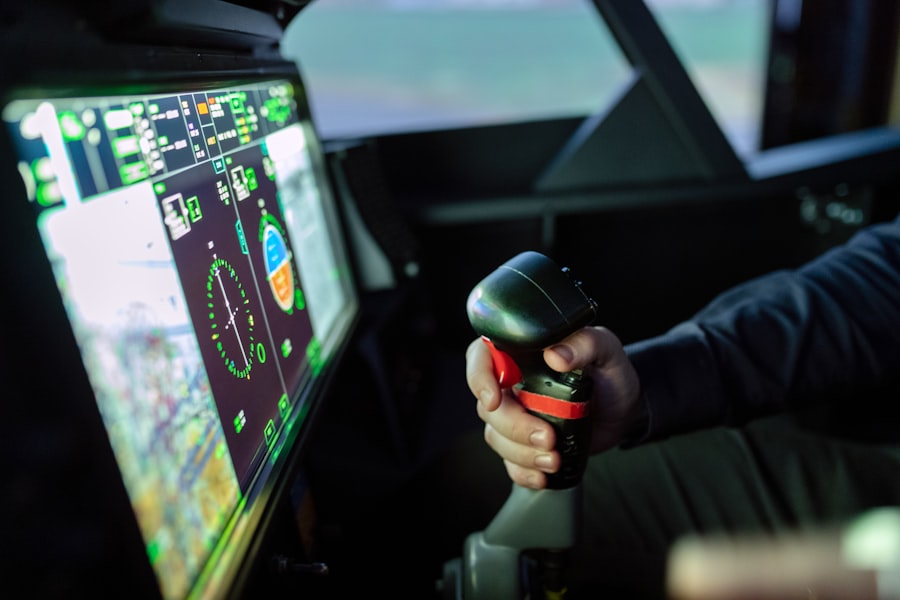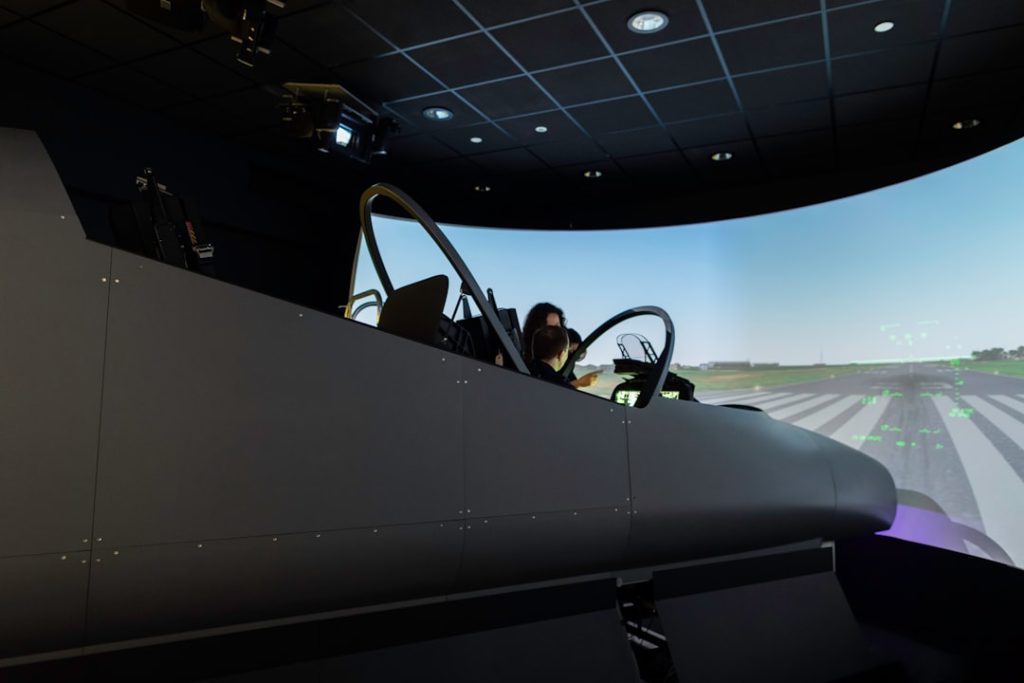Aeronautical engineering is a specialized field of engineering that focuses on the design, development, testing, and production of aircraft and spacecraft. This discipline encompasses a wide range of topics, including aerodynamics, propulsion, avionics, materials science, and structural analysis. As the aviation industry continues to evolve with advancements in technology and increasing demands for efficiency and sustainability, the role of aeronautical engineers has become more critical than ever.
These professionals are tasked with solving complex problems related to flight performance, safety, and environmental impact, making their expertise invaluable in both commercial and military applications. The field of aeronautical engineering is not only about understanding the mechanics of flight but also about innovating for the future. With the rise of unmanned aerial vehicles (UAVs), electric propulsion systems, and sustainable aviation fuels, aeronautical engineers are at the forefront of developing solutions that address contemporary challenges in air travel.
The integration of artificial intelligence and machine learning into aircraft systems further exemplifies the dynamic nature of this discipline. As such, aspiring aeronautical engineers must be equipped with a robust educational foundation that prepares them for the multifaceted challenges they will encounter in their careers.
Key Takeaways
- Aeronautical engineering involves the design, development, and testing of aircraft and spacecraft.
- Choosing the right university depends on factors like faculty expertise, research facilities, and industry connections.
- Top universities offer advanced research opportunities and strong internship programs.
- Graduates from leading programs often achieve significant career success and industry recognition.
- Access to internships and job placements is crucial for practical experience and employment prospects.
Factors to Consider When Choosing a University for Aeronautical Engineering
Selecting the right university for studying aeronautical engineering is a pivotal decision that can significantly influence a student’s academic and professional trajectory. One of the foremost factors to consider is the university’s accreditation status. Accreditation from recognized bodies, such as the Accreditation Board for Engineering and Technology (ABET) in the United States, ensures that the program meets high educational standards and is recognized by employers in the industry.
A degree from an accredited program not only enhances employability but also provides a solid foundation for further studies or professional licensure. Another critical aspect to evaluate is the faculty’s expertise and research interests. Universities with faculty members who are actively engaged in cutting-edge research can offer students unique opportunities to learn from leaders in the field.
Faculty involvement in industry projects or collaborations with aerospace companies can also provide students with insights into real-world applications of their studies. Additionally, prospective students should consider the availability of specialized laboratories and facilities that support hands-on learning experiences, such as wind tunnels, flight simulators, and materials testing labs. These resources are essential for developing practical skills that are highly valued in the aerospace sector.
Top Universities for Aeronautical Engineering

Several universities around the world are renowned for their aeronautical engineering programs, each offering unique strengths and opportunities. The Massachusetts Institute of Technology (MIT) consistently ranks at the top due to its rigorous curriculum and emphasis on research and innovation. MIT’s Department of Aeronautics and Astronautics provides students with access to state-of-the-art facilities and a collaborative environment that fosters creativity and problem-solving.
The university’s strong ties to industry leaders also facilitate internships and job placements for graduates. Another prestigious institution is Stanford University, which offers a comprehensive aeronautical engineering program through its Department of Aeronautics and Astronautics. Stanford is known for its interdisciplinary approach, allowing students to explore connections between aeronautics and other fields such as computer science and environmental science.
The university’s location in Silicon Valley provides students with unparalleled access to cutting-edge technology companies and startups, enhancing their educational experience through real-world applications. In Europe, Imperial College London stands out as a leading institution for aeronautical engineering. The college’s Department of Aeronautics is recognized for its research excellence and innovative teaching methods.
Students benefit from a curriculum that emphasizes both theoretical knowledge and practical skills, preparing them for careers in various sectors of the aerospace industry. Additionally, Imperial’s strong international reputation attracts a diverse student body, fostering a rich cultural exchange that enhances the learning environment.
The Benefits of Studying Aeronautical Engineering at a Top University
| Benefit | Description | Metric/Example |
|---|---|---|
| Access to Advanced Facilities | Top universities provide state-of-the-art labs and wind tunnels for hands-on learning. | Over 80% of top universities have dedicated aerospace labs |
| Expert Faculty | Learn from leading researchers and industry experts in aeronautical engineering. | Faculty with average 15+ years of industry experience |
| Research Opportunities | Engage in cutting-edge research projects that shape the future of aviation. | Top universities publish 30% more aerospace research papers annually |
| Industry Connections | Strong ties with aerospace companies facilitate internships and job placements. | 70% internship placement rate with leading aerospace firms |
| Higher Employability | Graduates from top programs have better job prospects and higher starting salaries. | 90% employment within 6 months of graduation |
| Global Recognition | Degrees from prestigious universities are recognized worldwide. | Ranked in top 10 globally for aerospace engineering |
| Networking Opportunities | Connect with alumni and professionals in the aerospace sector. | Alumni network of over 10,000 aerospace engineers |
Studying aeronautical engineering at a top university offers numerous advantages that can significantly enhance a student’s educational experience and career prospects. One of the primary benefits is access to cutting-edge research opportunities. Top universities often have substantial funding for research projects, allowing students to engage in groundbreaking work alongside experienced faculty members.
This exposure not only deepens their understanding of complex concepts but also cultivates critical thinking and problem-solving skills essential for success in the field. Moreover, attending a prestigious institution often opens doors to extensive networking opportunities. Students at top universities have the chance to connect with industry leaders, alumni, and fellow students who share similar interests.
These connections can lead to internships, job offers, and collaborations on research projects. The reputation of a well-regarded university can also enhance a graduate’s resume, making them more attractive to potential employers in a competitive job market.
Alumni Success Stories from Top Aeronautical Engineering Programs
The success stories of alumni from top aeronautical engineering programs serve as inspiring examples of what can be achieved with a solid educational foundation. Graduates from institutions like MIT have gone on to make significant contributions to the aerospace industry. For instance, an alumnus who completed their degree at MIT played a pivotal role in developing advanced propulsion systems for commercial aircraft, leading to increased fuel efficiency and reduced emissions.
Similarly, Stanford alumni have made their mark in various sectors within aerospace engineering. One notable graduate co-founded a startup focused on developing electric vertical takeoff and landing (eVTOL) aircraft, which aims to revolutionize urban air mobility. This innovative approach not only addresses transportation challenges but also aligns with global sustainability goals by reducing reliance on traditional fossil fuels.
These success stories highlight how education at top-tier institutions equips graduates with the skills, knowledge, and confidence needed to tackle complex challenges in aeronautical engineering. The strong foundation provided by these programs enables alumni to pursue diverse career paths, from research and development roles in established aerospace companies to entrepreneurial ventures that push the boundaries of technology.
Research Opportunities at Top Aeronautical Engineering Universities

Research opportunities at leading aeronautical engineering universities are abundant and varied, providing students with invaluable experiences that complement their academic studies. Many top institutions have dedicated research centers focused on specific areas within aeronautics, such as fluid dynamics, materials science, or aerospace systems design. These centers often collaborate with government agencies like NASA or private aerospace companies on projects that address pressing challenges in aviation.
For example, at Georgia Institute of Technology, students can participate in research initiatives related to unmanned aerial systems (UAS) or hypersonic flight technologies. Engaging in such projects allows students to apply theoretical knowledge to practical problems while working alongside faculty members who are experts in their fields. This hands-on experience not only enhances technical skills but also fosters teamwork and communication abilities—qualities that are essential in any engineering career.
Additionally, many universities encourage undergraduate students to engage in research through programs like summer internships or co-op placements. These opportunities allow students to immerse themselves in ongoing research projects while gaining insights into industry practices. By participating in research early in their academic careers, students can build a strong portfolio that showcases their capabilities to future employers or graduate schools.
Internship and Job Placement Opportunities for Aeronautical Engineering Students
Internship and job placement opportunities are critical components of an aeronautical engineering education, providing students with practical experience that enhances their employability upon graduation. Top universities often have established relationships with leading aerospace companies, facilitating internship placements for students during their studies. These internships allow students to apply classroom knowledge in real-world settings while gaining insights into industry practices.
For instance, many students at Purdue University secure internships with major aerospace firms such as Boeing or Lockheed Martin. These experiences not only provide valuable technical skills but also help students develop professional networks that can be instrumental when seeking full-time employment after graduation. Furthermore, internship programs often lead to job offers upon completion of studies, as companies frequently seek to hire interns who have already demonstrated their capabilities within the organization.
In addition to formal internship programs, many universities host career fairs and networking events specifically tailored for engineering students. These events bring together employers from various sectors within aerospace engineering, allowing students to connect directly with potential employers. Such interactions can lead to job interviews or mentorship opportunities that further enhance a student’s career prospects.
Making the Best Choice for Aeronautical Engineering Education
Choosing the right university for studying aeronautical engineering is a decision that requires careful consideration of various factors including accreditation status, faculty expertise, research opportunities, and internship placements. By selecting an institution that aligns with their academic goals and career aspirations, aspiring engineers can position themselves for success in this dynamic field. The benefits of studying at a top university extend beyond just academic knowledge; they encompass networking opportunities, access to cutting-edge research, and pathways to successful careers in aerospace engineering.
As students embark on this journey into aeronautical engineering education, they should remain open to exploring diverse opportunities within the field. Whether through internships or research projects, engaging actively with their studies will enrich their learning experience and prepare them for the challenges ahead. Ultimately, making an informed choice about where to pursue an education in aeronautical engineering can set the stage for a fulfilling career dedicated to advancing aviation technology and addressing global challenges in air travel.




